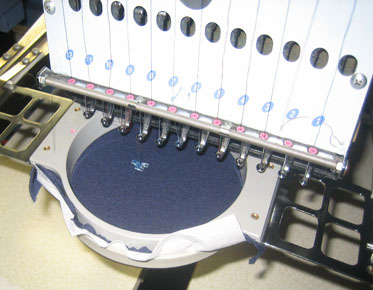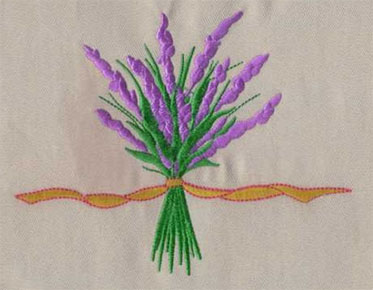Resolving Common Issues in Embroidery Machines: Tackling Thread Breaks, Skips, and Distortions
Embroidery machines play a crucial role in the
creation of intricate and beautiful embroidery designs. However, like any technology, they can encounter issues during the
embroidery process. This article aims to address common problems that may
occur, such as thread breaks, skips, or distortions. By understanding these
issues and implementing effective solutions, embroiderers can ensure smooth and
high-quality embroidery results.
I. Thread Breaks: Preventing Disruptions in Embroidery
1.1 Check Thread Tension:
Improper thread tension is a common cause of
thread breaks. Ensure that the tension is correctly adjusted according to the
machine's specifications and the type of fabric being used. Test the tension on
a scrap piece of fabric before starting the actual embroidery.
1.2 Verify Thread Quality and Compatibility:
Low-quality or incompatible threads can lead to frequent breaks. Choose high-quality threads specifically designed for embroidery. Check that the thread weight and type are suitable for the chosen fabric and needle size.
1.3 Inspect Needle and Bobbin:
Worn-out or damaged needles can cause thread breaks. Replace the needle regularly and ensure it is the correct type and size for the fabric. Additionally, check the bobbin for any tangles, knots, or debris that may obstruct the thread flow.
II. Thread Skips: Ensuring Consistent Stitching
2.1 Clean the Machine and Hoop:
Dust, lint, or debris can accumulate in the embroidery machine or hoop, leading to
thread skips. Regularly clean the machine, including the bobbin case, feed
dogs, and needle area. Clean the hoop to ensure smooth movement and proper fabric
tension.
2.2 Verify Design Digitization:
Errors in the digitized design can cause
thread skips. Ensure the design has been properly digitized and that there are
no overlapping or incomplete stitches. Utilize professional embroidery digitizing services to ensure accurate and
optimized designs.
2.3 Check Hoop Stability:
An unstable hoop can result in misalignment and thread skips. Ensure the fabric is securely hooped, avoiding excessive tension that may distort the design. If necessary, use stabilizers or backing materials to enhance stability.
III. Distortions: Overcoming Design Irregularities
3.1 Stabilize the Fabric:
Distortions may occur if the fabric is not
adequately stabilized. Choose an appropriate stabilizer based on the fabric
type and design complexity. Proper stabilization minimizes fabric movement
during embroidery, reducing the risk of distortion.
3.2 Optimize Hoop Tension:
Uneven tension in the hoop can lead to fabric
distortions. Ensure the fabric is evenly tensioned and taut within the hoop,
maintaining a consistent surface for embroidery. Adjust the hoop tension as
needed.
3.3 Evaluate Design Density:
Excessive design density can cause distortions, especially on lightweight or stretchy fabrics. Adjust the digitized design to reduce stitch density in areas prone to distortion. Test the modified design on a sample fabric before proceeding with the final embroidery.
FAQs:
1. How can embroidery digitizing services help
prevent distortions in embroidery?
Embroidery digitizing services play a crucial
role in optimizing designs for embroidery. Their expertise ensures proper
stitch density, stitch types, and pathing, minimizing the risk of distortions. Professional digitizers understand the
intricacies of different fabrics and can adjust designs accordingly.
2. What can I do if I continue to experience
issues despite troubleshooting steps?
If problems persist, consider consulting the
embroidery machine manufacturer or a professional technician. They can provide
specialized support and diagnose any mechanical or technical issues with the
machine.
3. How often should I clean and maintain my
embroidery machine?
Regular cleaning and maintenance are essential
for optimal machine performance. Follow the manufacturer's recommendations for
cleaning and maintenance intervals, and perform routine checks to keep the
machine in top condition.
Conclusion:
Addressing common issues in embroidery
machines, such as thread breaks, skips, and distortions, is essential for
achieving high-quality embroidery results. By implementing proper thread
management, ensuring design accuracy, and paying attention to fabric
stabilization, embroiderers can overcome these challenges. Additionally,
leveraging embroidery digitizing services can enhance design optimization and reduce the risk of
distortions. With these solutions and a proactive approach to troubleshooting,
embroiderers can create stunning embroidered pieces with minimal interruptions.


